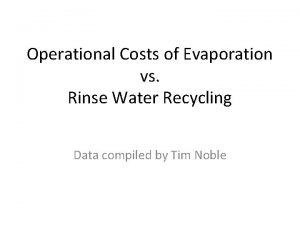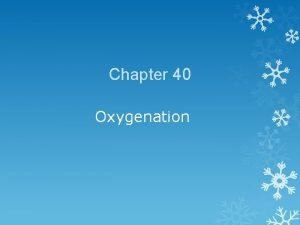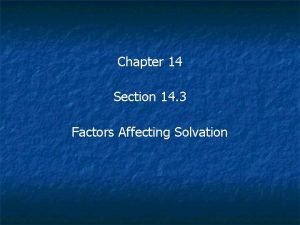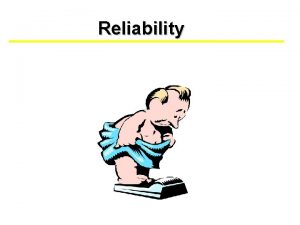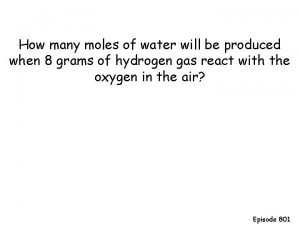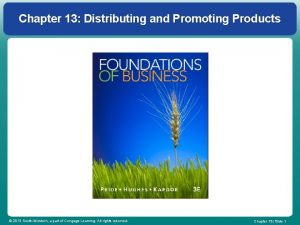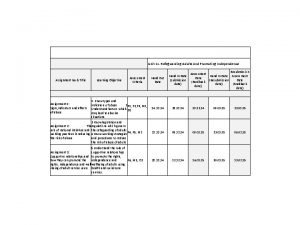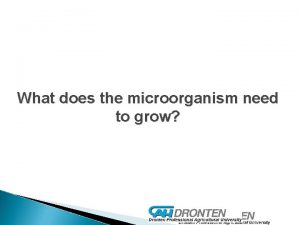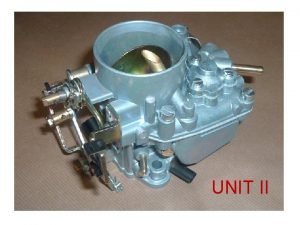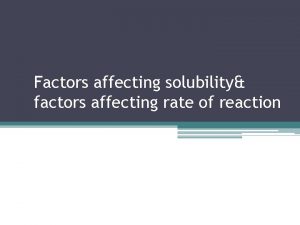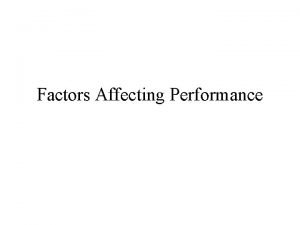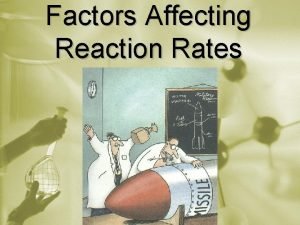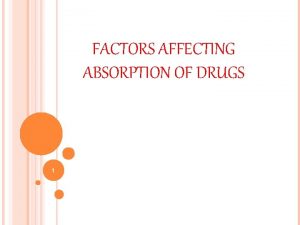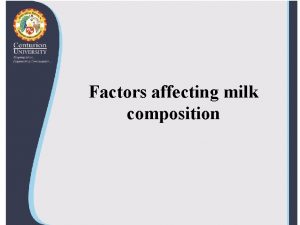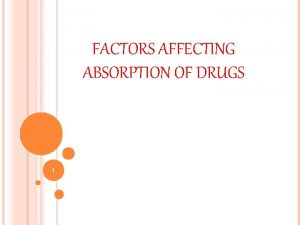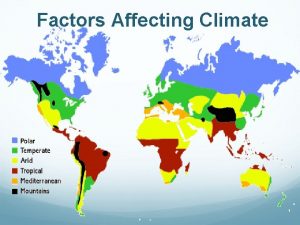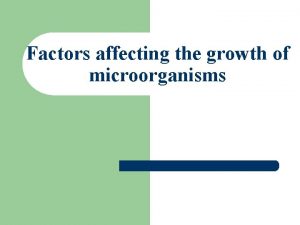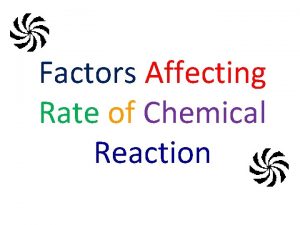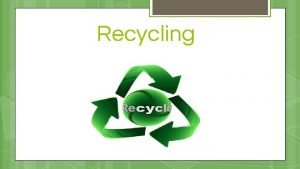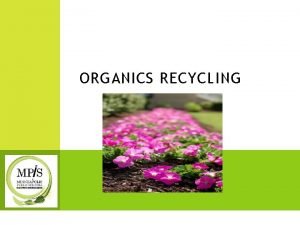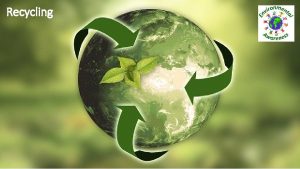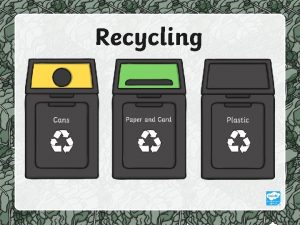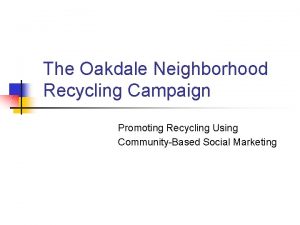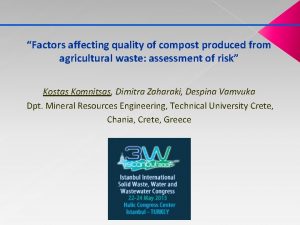Factors Promoting and Affecting Produced Water Recycling in




























- Slides: 28

Factors Promoting and Affecting Produced Water Recycling in the Permian Basin Presented by: Richard Bost, P. E. , P. G. (Texas) and Don Whitley, P. G. , multiple states I 2 M Associates 1

Co-Authors and Acknowledgements Many thanks to Ø Ø Ø Don Gorber and Lloyd Torrens, Independent Environmental Consultants Jennifer Warfield, ERM & Lori Magyar, Auradon Consulting Resourses at Texas Railroad Commission Produced Water Society – Permian Basin Our clients, TCEQ, CDC, and RCT and Andrew Fono, formerly of Winstead and Haynes & Boone I 2 M Associates 2

Produced Water is a New Source of Water Depending on Locale I 2 M Associates 3

Several States and Regions Have Produced Water Reuse Initiatives That Have Borne Fruit I 2 M Associates 4

Pennsylvania Case Study Pennsylvania continues to set the pace for recycling produced water for frac-ing in the Marcellus shale versus other states in the play, with More than 60% of the 25 million barrels produced are being stored and treated for multiple applications. At the close of 2016, reported wastewater production from Pennsylvania’s 6, 538 permitted wells declined 54% to 11. 8 million barrels from a historical high of 25 million barrels in the second half of 2014. Data based on information for over 6, 500 horizontal wells I 2 M Associates 5

Produced Water Society – Technical Committee for Permian Basin Munib Ahmad, AAA Resources Tyler Hussey, Apache Devesh Mittal, Aquatech John Walsh, Cetco Drayton Bryant, Cetco Michael Dunkel, CH 2 M Cheng Chen, Chevron Sheri Simpson, Chevron Kushal Seth, Gradiant Energy Services Wally Georgie, Maxoil Solutions Steve Roeder, Mustang Energy Services Matthew Goysich, MYCELX James Robinson, Oxidane Engineering Rajendra Ghimire, PFP Industries Brad Nelson, Produced Water Solutions Gregory Hallahan, Pro. Sep Robert Bruant, Red Tree Energy I 2 M Associates Cindy Pena, Rockwater Energy Solutions Jim Patterson, Ry. Kor Hani Al Khalifa, Saudi Aramco Daniel Shannon, Schlumberger Michael Grossman, Scinor Water America Chris Catalanotto, Siemens Dustin Brownlow, Texas Water Solutions Management Group Ming Yang, TUV Emily Sappington, University of Houston Duane Germenis, Veolia Lisa Henthorne, Water Standard Valentina Llano, Water Standard Xandra Turner, Water Vision John Durand, Water. Bridge Jay Keener, Xedia Process 6

SPE Water Handling & Management Technical Section The SPE is currently restructuring the Water Handling & Management Technical Section and redefining its scope. Water sourcing Chemicals Produced water and flowback water treatment There are over 1, 300 SPE members registered in the Water Handling Water disposal and Management Technical Section. Operations best practice Any SPE member may join a technical section Environmental and sustainability SPE has envisaged that the scope issues of the technical section would include water management issues Cooperation with other professional in both conventional and societies unconventional fields, such as: I 2 M Associates Industry standards US and international regulations 7

Produced Water Re-Use: Technological Developments Help Sustain Shale Oil & Gas Well Drilling & Production Increases Overview of Economic, Logistical, Geo-Chemical & Other Factors Affecting Water Reuse I 2 M Associates • Projections of Produced Water by 2025 • Seismicity Issues • Availability of Freshwater and Demands for Water • Ground water aquifer depletion with population growth • Increasing agricultural and commercial/industrial demand • Horizontal well fracturing most with freshwater • Or with blending in freshwater • Produced Water Chemistry Issues • Had limited utility for reuse in fracturing • Produced Water Management Options • Deep Well Disposal-historical method of choice • Direct Filtration and Reuse • Advanced Treatment for Reuse • Treatment and Discharge • Experience with Water Reuse/Recycling 8

Overview of Economic, Logistical, Geo. Chemical & Other Factors Affecting Water Recycling in Permian Basin I 2 M Associates • Economic: Huge increase in drilling & production with waterto-oil ratios of up to 5: 1 is driving up demand Injection Well disposal costs for Produced Water making recycling more affordable • Economic: Water flooding EOR is less economical • Economic & Produced Water Projections: Water costs are expected to double to $22 Billion by 2025 ($1/bbl to $6/bbl) • Logistical: Increased length, density and number of horizontal wells means greater volumes of injection in a single location: increasing injection pressures • Seismicity Issues: recent monitoring reveals increased frequency of low-energy events and potential for significant seismic events • Availability of freshwater: fewer source opportunities vs demand, increasing economic costs and political pressure 9

Texas BEG Study I 2 M Associates 10

I 2 M Associates 11

Factor: Trends Toward Longer and Clustered Horizontal Wells and Larger Hydro-fracturing Water Volumes I 2 M Associates 12

2016 One-Year Seismic Hazard Forecast for the Central and Eastern United States from Induced and Natural Earthquakes By Mark D. Petersen, Charles S. Mueller, Morgan P. Moschetti, Susan M. Hoover, Andrea L. Llenos, William L. Ellsworth, Andrew J. Michael, Justin L. Rubinstein, Arthur F. Mc. Garr, and Kenneth S. Rukstales Open-File Report 2016– 1035



Produced Water is water that is returned to the surface through a well borehole Made up of water injected during fracture stimulation process and primarily of natural formation water (consequently quantity and quality will vary) Typically is produced for the lifespan of a well (quantities vary significantly) Produced water requires chemical analysis prior to reuse / recycling or disposal to assess treatment requirements, compatibility with reuse Analyzed for hydrocarbons, metals, and naturally occurring elements Water quality varies: “Brackish” (5, 000 to 35, 000 ppm TDS) “Saline” (35, 000 to 50, 000 ppm TDS) “Brine” (50, 000 to 150, 000+ ppm TDS) I 2 M Associates 16

Produced Water Recycling: Factor Technological Developments • Historical Preference for Freshwater amenable to chemical treatment to inhibit formation issues • Produced Water Chemistry Issues have limited reuse for horizontal well fracturing • Scaling and Fouling • Friction (fracture effectiveness) and Damage to Formation (softening rock/reduced conductivity) • Produced Water Management Options • Deep Well Disposal • Direct Filtration and Reuse • Advanced Treatment for Reuse • Treatment and Discharge I 2 M Associates 17

Factor – Freshwater vs Produced Water Treatment Advances allow Fracturing with Produced Water EXAMPLE FROM HALLIBURTON Produced water: high TDS up to 285, 000 ppm. At such levels, developing stable crosslinked fluid systems becomes difficult, so operators use fresh water for fracturing. Halliburton developed a customized frac fluid for high-TDS produced water. The fluid is designed to crosslink using the operator’s produced water. Halliburton treated eight wells with the formulation. It worked as effectively as fluids mixed with fresh water. Halliburton Clean. Wave treatment service, an electrocoagulation process that removes hydrocarbons, heavy metals and suspended solids. I 2 M Associates Even though dissolved solids remained, the water was clean enough to work effectively with the new customized fluid additive system On site treatment reduces the cost of water transportation via trucking by 1, 400 loads, saving money and infrastructure. Historically, using produced water for fracturing has been cost-prohibitive. The cleanup costs necessary to create an effective crosslinked frac fluid were just too high compared to the cost of fresh water. Estimated savings of eight million gallons of fresh water and $500, 000 to $700, 000 in total cost of operations. 18

Factor – Technologic Water Treatment Advances allow Fracturing with Produced Water EXAMPLE FROM CONOCO. Developed new test methods for evaluation potential formation damage Screens alternative fluid treatment and additive systems for potential damage to the proppant conductivity of fractured shale formations. The best fluid reduced risk of damage significantly when a high p. H produced water fluid was considered. The treated produced water was also shown to have a less negative impact on rock hardness. Sharma and Bjornen (2018) wrote that this finding “makes sense” – inject water similar to water already in the formation to reduce formation damage Conoco treatments should make properly designed produced water less prone to proppant embedment. It should also result in more conductive fractures than with freshwater alternatives. A fluid damage test helped distinguish between the effectiveness of different fluid and breaker systems, and a rock softening test was developed to evaluate the impact of fluid interaction on the surface using a Nanovea Micro Hardness tester. Sharma and Bjornen (2018) wrote that the amount of potential residue filtered by a thin proppant pack of small proppant was potentially damaging. With another, the iron-stained residue was eliminated but the hardness remained. I 2 M Associates 19

Produced Water vs. “Slick” Water Volumes Feasibility of Produced Water Reuse is dependent on 3 factors: Produced Water Generation by Shale Play Varies Widely: Initial Produced Water vs. Quantities and Rates of Water Production and Demand Important for Reuse: require large volumes over short time period for “frac”ing Not only dependent on quality, but also Quantity and Duration “Initial” defined here as first 10 days of Flowback and Production Process Barnett, Fayetteville, and Marcellus Shales 500, 000 to 600, 000 gallons per well in first 10 days ~ 10% to 15% of total water needed to “frac” a new well Haynesville Shale 250, 000 gallons per well in first 10 days ~ 5% of total water needed to frac a new well I 2 M Associates 20

Geo-Chemistry of Produced Water I 2 M Associates Blending for Reuse - TDS Chlorides and Total Dissolved Solids (TDS) Generally not looking at removal, TDS determines freshwater blending ratios Very high TDS increases friction in hydraulic fracturing process (bad) Counter: Freshwater can damage a formation Filtering Prior to Reuse - TSS Turbidity and Total Suspended Solids (TSS) Can determine filtration rates, size of filter, performance High solids can plug well and decrease biocide effectiveness Other Parameters of Concern Water “hardness” compounds (e. g. Calcium and Magnesium) create mineral precipitation Sulfates can be used by bacteria to create hydrogen sulfide & corrosion issues Barium can combine with sulfates to create scale High iron can drop out creating emulsions and plugging, induces fouling Bacteria is always a concern 21

Filtration Process with new Additive Systems for Reuse Filtration Process: Produced water during “ flowback” process collected and stored in holding tanks onsite. Produced water pumped from tanks through a 100 -micron filter followed by a 20 -micron filter Filter is designed to remove suspended solids in fluid (not salts). Filtered fluid is pumped into a clean storage tank and transported to next well to be hydraulically fractured Filters and solids collected are disposed of by a licensed contractor and sent to an approved landfill Reuse Process: Prior to use in frac, the water is tested for remaining constituents (TDS/Salts, Scaling Compounds) that were not removed in filtration process Test results determine blending ratios Robust scale inhibition and bacteria elimination programs implemented which require substantial management and testing prior to frac Fresh or brackish “make-up” water is blended in to meet quality and quantity requirements I 2 M Associates 22

Advanced Technologies: Thermal Distillation & Reversed Osmosis Thermal Distillation and/or Advanced Reverse Osmosis Ability to treat produced water and recapture the water Beneficial if an end user for water: e. g. , electric power plants and discharge to rivers for ag and municipal use Previously energy intensive (and costly)—requires regulatory changes !!!! Both OK and TX are seeking approval to permit Most distillation/advanced RO systems are designed for treatment of large volumes of water Centralized treatment facilities & long transportation distances Five of 8 larger water management companies plan new plants In Use in West Texas: E. g. , El Paso treats brackish water and “recharges” its drinking water aquifer with ~27 mgd of freshwater I 2 M Associates 23

Advanced Technology; Reverse Osmosis and Chemical Treatments I 2 M Associates Membrane Systems (Reverse Osmosis) Historically prone to scaling without comprehensive pretreatment Need very experienced operators Technology much improved with advanced multi-membrane systems and membrane washing Advanced coatings Energy requirements have decreased with membrane advances Increased use in Texas Chemical Precipitation and Electro-Coagulation Less expensive Still requires relatively experienced operators Used more with alternative sources of water such as municipal waste water 24

In Summary: Economic and Social Contract Drivers Are Encouraging Recycling in Permian Reduction in the volume of wastewater Less sent offsite for disposal Less risk of seismic activity Less fresh water needed for hydraulic fracturing operations Reduced impact on local supplies Reduced truck traffic on public roads (less fresh water hauled) Less impact on public roads, noise, air quality Filtration process used is inexpensive and does not require substantial amounts of energy Processes that remove salts (i. e. reverse osmosis membranes, distillation) Are helping to reduce the cost of operations I 2 M Associates Reduces wastewater disposal costs, water supply costs, and transportation costs 25

Discharge Plans Being Opposed Concerns of the so called permanent removal of water from the effective hydrologic cycle vs impact on surface water quality Concerns will reduce water available for human consumption Most water used in shale gas development either remains in the formation or returns as produced water Environmentalists oppose both water used in fracturing as well as water reuse Concerns with “re”use of treated municipal waste water All water use is reuse; many river flows are nearly all treated waste water !!!! The conventional method for disposal of produced water is through permitted Class II Salt Water Disposal Wells which have been associated with increased seismicity Argument that this is a different type of “consumption” than the evaporation of water from a power plant and other types of “consumption” I 2 M Associates Agricultural production is by far largest consumer of water Oil and gas very small in comparison 26

Conclusions Ø Technological advances are benefiting and addressing environmental concerns and facilitating increased production and effectiveness Ø Injection for disposal has been associated with releases & seismicity. Ø Economic and Social Contract Incentives are Increasing Produced Water Recycling in the Permian I 2 M Associates 27

Questions and Answers I 2 M Associates 28
 Water and water and water water
Water and water and water water Rinse water recycling
Rinse water recycling Factors affecting wound healing local and systemic
Factors affecting wound healing local and systemic Factors influencing oxygenation
Factors influencing oxygenation Factors affecting width and intensity of spectral lines
Factors affecting width and intensity of spectral lines 3 factors that affect solvation
3 factors that affect solvation Meaning of wages and salary
Meaning of wages and salary Factors affecting mobility and immobility
Factors affecting mobility and immobility Test retest reliability
Test retest reliability Aluminum iodide
Aluminum iodide To cook by the vapor produced from boiling water
To cook by the vapor produced from boiling water Promote service arrange decide
Promote service arrange decide Lesson 4 promoting health and wellness
Lesson 4 promoting health and wellness Chapter 1 lesson 4 promoting health and wellness
Chapter 1 lesson 4 promoting health and wellness Lesson 4 promoting health and wellness
Lesson 4 promoting health and wellness Chapter 7 promoting health and wellness
Chapter 7 promoting health and wellness Chapter 13 distributing and promoting products
Chapter 13 distributing and promoting products Promoting services and educating customers
Promoting services and educating customers Promoting a positive health and safety culture
Promoting a positive health and safety culture Unit 11 safeguarding adults and promoting independence
Unit 11 safeguarding adults and promoting independence Health and wellness vocabulary
Health and wellness vocabulary What factors affect the weather
What factors affect the weather Factors affecting microbial growth in food
Factors affecting microbial growth in food Factors affecting volcanic eruption
Factors affecting volcanic eruption Factors affecting volcanic eruption
Factors affecting volcanic eruption Nozzle lip in carburettor
Nozzle lip in carburettor Factors affecting tg curve
Factors affecting tg curve Five factors that affect housing choices
Five factors that affect housing choices Factors affecting the success of multilingualism
Factors affecting the success of multilingualism

